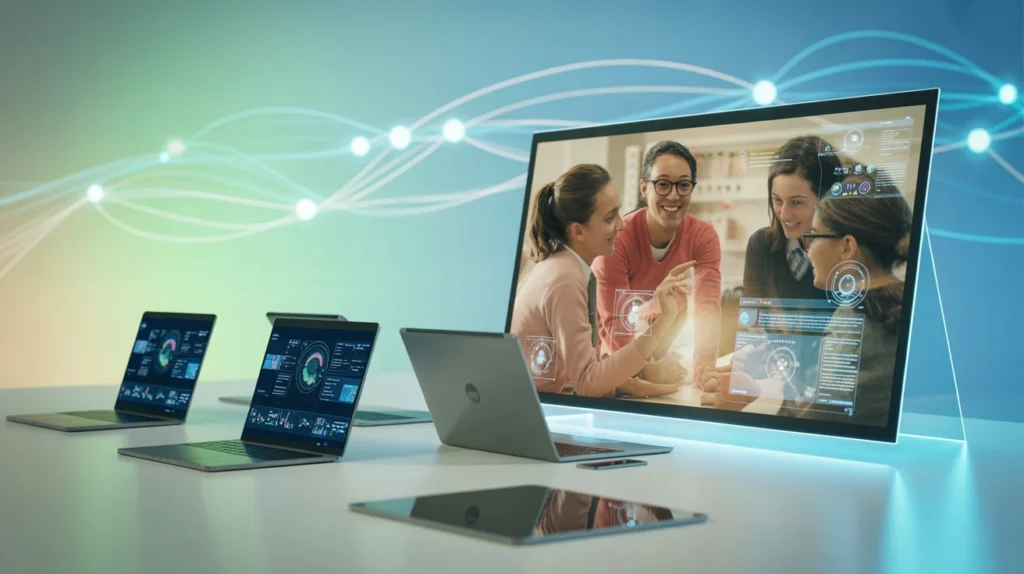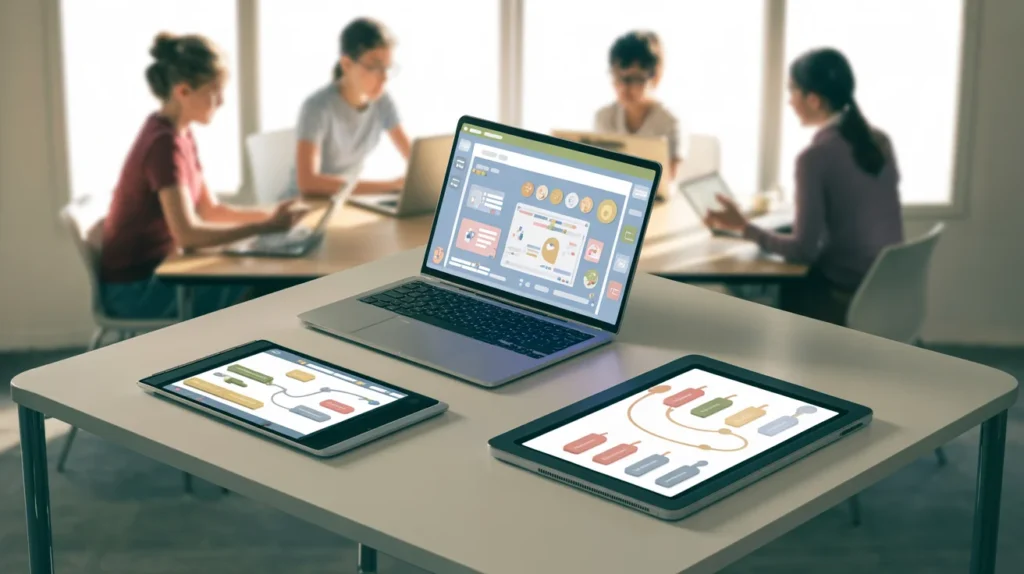Instructional technology services are revolutionizing education by blending technology with teaching methods. These services help schools, universities, and organizations create engaging, effective learning experiences. With the rapid growth of digital tools, instructional technology has become essential for modern education.
By integrating multimedia, online platforms, and interactive software, instructional technology supports both educators and learners. They ensure content is accessible, adaptive, and optimized for different learning styles. This approach enhances knowledge retention and student participation.
Understanding instructional technology can help educators leverage these tools to improve learning outcomes. This article explains how these services function and why they are vital in today’s educational landscape.
Benefits of Instructional Technology Services in Education
Instructional technology services provide numerous advantages that transform traditional classrooms into dynamic learning environments. They bridge gaps between teachers and students by making lessons more interactive and personalized.
Educational Benefits:
- They enable remote learning, allowing students to access education anytime, anywhere.
- These services offer data analytics to track student progress and tailor instruction accordingly.
- They increase student engagement through multimedia content like videos, quizzes, and simulations.
- Instructional technology services reduce administrative tasks by automating grading and attendance.
- They foster collaboration among students via discussion forums and group projects online.
These benefits make instructional technology services a vital investment for educational institutions aiming to modernize their teaching practices.
Key Components of Instructional Technology Services

Instructional technology comprises several essential components that work together to create an effective and engaging learning environment. These components support different aspects of teaching and learning, ensuring that educational content is delivered efficiently and meets the needs of diverse learners.
Learning Management Systems (LMS)
Learning Management Systems serve as centralized platforms where courses, assignments, grades, and other learning materials are organized and accessed. LMS allows educators to manage their classes digitally, track student progress, and provide resources in one convenient location. They simplify course administration and foster a structured learning experience for students.
Educational Software
Educational software includes interactive tools designed to teach specific subjects or skills. These programs often use gamification, simulations, or step-by-step tutorials to engage learners actively. By providing personalized and hands-on learning opportunities, educational software helps reinforce concepts and build mastery in various disciplines.
Multimedia Content
Multimedia content refers to the use of videos, animations, audio clips, and other rich media to support different learning styles. Visual and auditory materials make complex ideas easier to understand and maintain learner interest. Incorporating multimedia into lessons enhances comprehension and retention by catering to the varied preferences of students.
Assessment Tools
Assessment tools are digital quizzes, tests, and exams that provide immediate feedback to both students and teachers. These tools help evaluate learner understanding in real time, allowing for timely interventions and support. They also reduce the manual workload of grading and offer detailed insights into student performance trends.
Communication Tools
Communication tools include chat functions, video conferencing, and discussion forums that enable real-time or asynchronous interaction between teachers and students. These tools facilitate collaboration, clarify doubts, and maintain engagement, especially in remote or hybrid learning environments. They create a connected educational community beyond the physical classroom.
How Instructional Technology Services Improve Teacher Effectiveness
Instructional technology enhances teacher effectiveness by streamlining lesson planning and delivery. With easy access to a wide range of digital resources, educators can quickly customize materials to suit different learning styles and student needs. This flexibility enables teachers to devote more time to instruction, rather than administrative tasks, resulting in smoother and more efficient classroom management.
Additionally, these services provide real-time data on student performance, enabling teachers to identify learning gaps and intervene promptly. By using technology-driven insights, educators can tailor their teaching strategies for better outcomes. Instructional technology also encourages innovation, allowing teachers to adopt modern methods like flipped classrooms and gamified learning, which boost student engagement and motivation.
Instructional Technology Services: Supporting Diverse Learning Styles
It recognize that students have unique ways of learning. By offering a variety of content formats, these services cater to visual, auditory, and kinesthetic learners, ensuring everyone can engage with the material in a way that suits them best. This personalized approach boosts understanding and retention across diverse student groups.
Visual Learners
- Videos that explain concepts clearly and visually
- Infographics that simplify complex information
- Interactive charts and diagrams to support visual memory
Auditory Learners
- Podcasts covering key topics and lessons
- Narrated presentations to reinforce spoken information
- Audio recordings for language and listening practice
Kinesthetic Learners
- Interactive simulations to practice skills hands-on
- Virtual labs offering experiential learning opportunities
- Gamified activities that encourage movement and participation
Challenges in Implementing Instructional Technology Services
Despite the many advantages, adopting instructional technology comes with several challenges. Schools and institutions must overcome financial, technical, and human factors to successfully integrate these tools and fully benefit from their potential.
High Costs of Software and Hardware
The expense of purchasing and maintaining the necessary software and hardware can be a significant barrier for many schools. Budget constraints often limit access to up-to-date technology, making it difficult to provide equal learning opportunities for all students.
Training Teachers to Use New Tools
Effective use of instructional technology requires comprehensive teacher training. This process demands time, effort, and financial resources to ensure educators are confident and skilled in using new platforms and software, which can delay implementation.
Technical Issues Like Unreliable Internet Connectivity
Many schools face technical challenges such as poor or inconsistent internet access. These issues can interrupt lessons, frustrate users, and reduce the overall effectiveness of technology-based instruction, especially in remote or rural areas.
Resistance to Change from Traditional Teaching Methods
Some educators and administrators may be hesitant to adopt new technology due to comfort with traditional teaching approaches. This resistance can slow down the integration process and limit the transformative potential of instructional technology services.
Future Trends in Instructional Technology Services
Instructional technology services are evolving quickly, driven by innovative tools that reshape how education is delivered. These emerging trends promise to make learning more personalized, immersive, and accessible, while helping educators make informed decisions based on data.
Artificial Intelligence (AI)
- Powers personalized learning paths tailored to individual student needs
- Automates grading and administrative tasks for teachers
- Provides real-time feedback and adaptive learning experiences
Virtual and Augmented Reality (VR & AR)
- Creates immersive simulations for hands-on learning
- Enhances engagement through interactive 3D environments
- Offers virtual field trips and labs without physical constraints
Mobile Learning Apps
- Increases learning accessibility anytime and anywhere
- Supports microlearning with short, focused lessons
- Enables offline access for learning without internet.
Data-Driven Insights
- Analyzes student performance to improve curriculum design
- Identifies learning gaps and intervention opportunities
- Helps educators track trends and measure teaching effectiveness
These trends promise to transform education further and enhance the impact of instructional technology services.
Instructional Technology Services: Enhancing Student Collaboration
Instructional technology services play a crucial role in enhancing student collaboration by providing digital platforms that extend learning beyond the physical classroom. These tools make it easier for students to work together on group projects, even when they are not in the exact location. Shared online workspaces allow team members to organize tasks, share files, and coordinate efforts efficiently, promoting teamwork and accountability.
In addition to project management, communication tools like discussion boards and video conferencing enable continuous interaction and idea exchange among students. Discussion boards offer a space for peer feedback and thoughtful conversations, while video calls support real-time collaboration and problem-solving. This technology-rich environment helps students build essential communication skills and prepares them for future work in increasingly digital and remote professional settings.
Practical Strategies to Use Instructional Technology Services
To maximize the benefits of instructional technology services, institutions should follow these strategies:
- Invest in teacher training to build confidence with digital tools.
- Choose user-friendly platforms that integrate smoothly with existing systems.
- Encourage student feedback to improve technology use continuously.
- Set clear goals to measure the impact on learning outcomes.
- Ensure equitable access for all students, regardless of socio-economic background.
Implementing these strategies promotes sustainable and effective use of instructional technology services.
Conclusion: The Impact of Instructional Technology Services
Instructional technology services have become a cornerstone of modern education. They empower educators to deliver engaging and personalized learning experiences while preparing students for a technology-driven world.
By overcoming implementation challenges and embracing future trends, educational institutions can unlock the full potential of instructional technology services. This ensures learners develop critical skills and stay motivated throughout their educational journey.
Investing in instructional technology services today paves the way for a more inclusive, interactive, and innovative future of learning.
